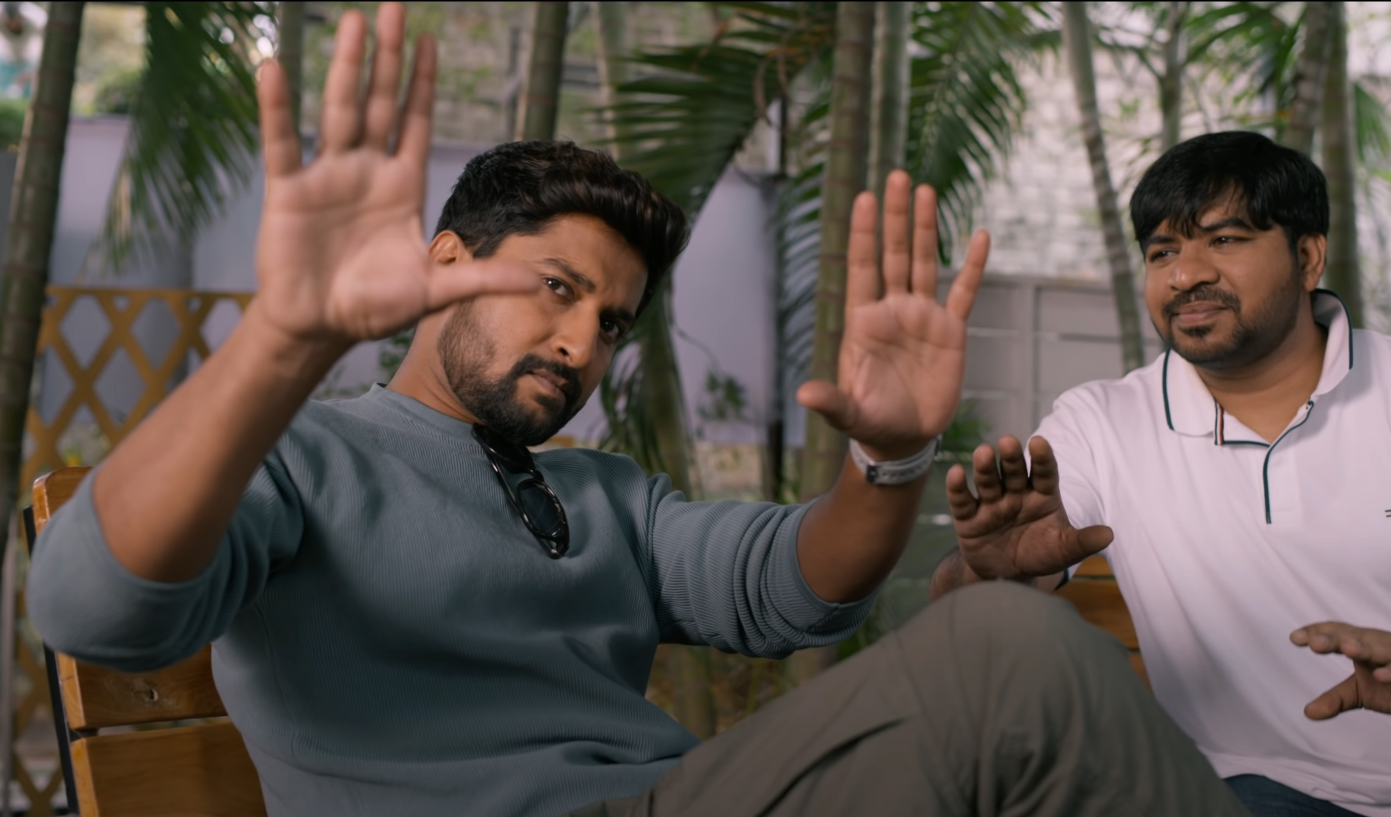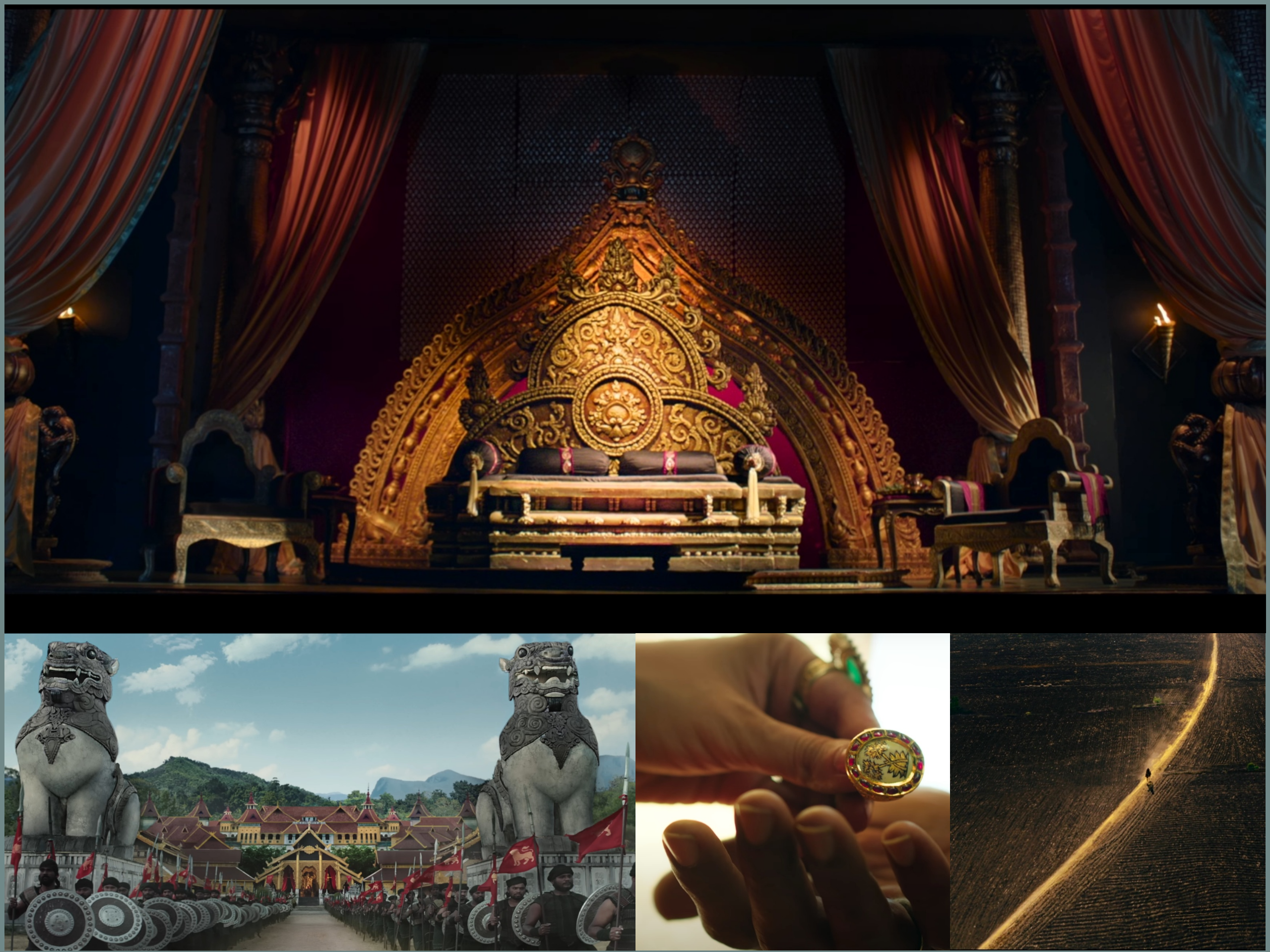Thoughts on Shyam Singha Roy (1/2)
Shyam Singha Roy – An Imperfect Reincarnation
Nearly an hour into the film, a Lie Detection Test is considered concrete enough just to bail out Vasudev Ghanta – the upcoming film director. The camera takes a mid close up onto Nani’s face which shows a sliver of joy. The camera then rake focusses to the background where Abhinav Gomatham and Krithi Shetty burst in joy, taking the happiness a notch higher.
In
that sliver of joy expression, you see for a second, Nani as
an actor, conveying a genuine emotion with equal genuineness. But the camera
doesn’t spend enough time on the actor’s face as it wants to capture the faces
which show genuine emotion with exuberant faces – that of Abhinav and Krithi. This small gesture from the filmmaking point of
view was my first clue in what was the centre of imperfections in this Nani’s film.
Here’s
my chain of thought. Why give such a wide-eyed, 1000 watt lighten smile at your
hero? Is it because he was your friend/boyfriend?
Hardly I saw a great
brotherhood/chemistry getting developed between these 2 characters and Vasudev.
Their portions are shoddily written, superficially emoted and done away. Abhinav’s role is a textbook example of Telugu Hero Sidekick. He’s there to be mocked by the hero and still stay
by him (and support) in all his endeavours. Just like the first joke that lands
on Abhinav about his café named Coffee inn misspelt as Coffin, his character and relationship dynamics
with the hero are lame (but advantageously overlooked).
Coming
to the love interest – We start with the girl being polar opposite in terms of
her interests towards anything in and around films. The graph slowly reverses
as she ultimately falls to him by the 40-minute mark, like an email scheduled
for an important reminder. The romance is mechanical, sudden and has an
outdated age-old foundation on either Sympathy (towards Vasudev)
or the Hero-Savior Complex. Their chemistry, unlike the friendship with Abhinav,
can hardly be overlooked and forgiven.
Coming
back to the main Question – Why give such a huge smile – as if it looks like a
burst of joy? Is it because he is a great filmmaker?
Vasudev pensively sitting
outside the theatre on the FDFS of his first directorial, is snapped into a conversation
as Abhinav asks, “Are you feeling nervous?”. Vasudev’s reply
to this more or less is that this project was his 10-year dream plus a year of
hard work, so nervous is a very small word to bracket his current state of
mind.
But
all I have seen till now was Vasudev as a Director. Not as a Struggling Director. A 10-year dream project should mean that
his mind is completely preoccupied with the ideas associated with that film’s
script. Here we see he is having a gala time shooting a small short film,
cracking jokes on his friends cum assistants (plural because there’s a sidekick to the
sidekick), and happily romancing his newly found short film heroine who is
weirdly cast (and that weirdness is covered with a bookish description of 5
important qualities of a great actor – he saw all that in her cigarette puff?
Sorry, the girl?).
One
year of struggle felt like 5 minutes of zoning out on a night while
over-drinking vodka to overcome writer’s block. 5 minutes only because Shyam Singha Roy takes the job from there to finish the rest of
the script. Vasudev continuously states (in a rather sarcastic manner.
Was it really necessary to win laughs here too?) that he always had big dreams,
but a small budget. In addition, he has even sacrificed the month’s rent to
make this short film. That there was the first sign of struggle that
I actually saw in this wannabe filmmaker. Just a sign, I
should say. The opening montage of Ratsasan struck me harder with the uncertain tides in the
life of an upcoming filmmaker. Vasudev’s story felt like a 45minute bland and cliched tale
which is trying to mimic the emotions.
His
short film Uniki¸ having a figurative element of a butterfly is cut short into a montage
for a peppy number – Tara. In a nutshell, no character is worth remembering
(including Nani’s Vasudev), no emotion is worth savouring. The same characteristics define to a certain extent, Nani’s film these days. These easy-going plots or
subplots case is always coming as a part and parcel of Nani’s film,
spoiling the entire serious mood of the film. They downsize Nani as
an actor and expand on Nani as a hero. They overstay their welcome and spoil the
entire narrative and that is what has tampered with my experience with this film.
Apart
from the Characters, Romance, Films and Hypnotherapy, there is also an
important element in the first half, a fine thread that has been buried with
all these imperfections. The Shyam
Singha Roy’s abstract presence was
only respected by the masterful Cinematography (even in the entire film) of Sanu John Varghese.
The
easy spot for the quality of his work here is the Cold versus Warm shades that
he uses for the 2020s and 1970s respectively. Both the palettes deliver an opulent
look in terms of distinction and Sanu deftly banks upon a few moments in both the halves
to utilize this effect to the maximum extent. In the first half, the peppy
number Tara literally acts as a showreel to show rainbows (on a
large canvas), smoke, lenses etc. But what’s astonishingly subtle is the slow
lurking of warm shades into the film as the story progresses. The first time
you see the warmth is in the fight scene at the market, as the hero saves the
heroine from public harassment.
 The
colours are grey, black in the costume (foreground) with walls made out of
stone having a colour of light brown (background). But Sanu doesn’t stop there, as he gives an extra layer of
yellow which creeps into the frame, though out of focus, in the form of a Mahankali wall painting in the background. The staging also
bears a similarity to the flashback where the hero revolts against a character
due to a similar, more intense situation of a woman being harassed.
The
colours are grey, black in the costume (foreground) with walls made out of
stone having a colour of light brown (background). But Sanu doesn’t stop there, as he gives an extra layer of
yellow which creeps into the frame, though out of focus, in the form of a Mahankali wall painting in the background. The staging also
bears a similarity to the flashback where the hero revolts against a character
due to a similar, more intense situation of a woman being harassed. There’s
another moment where the warm shades excellently blend into the frame, again
with a fine poetic touch from the narrative. The cosy campfire scene on the
terrace, just before Vasudev’s intimate scene with the heroine, has Vasudev sitting
rather actively and speaking wittily in contrast to a chilled-out behaviour.
Notice that he even resists drinks initially and starts holding the cigarette
in his left hand (like Shyam). The source of yellow in this scene becomes the campfire,
as the camera, in the light of the fire, starts exposing more and more of the left
side of Vasudev’s face. The same fire which is used here becomes an
important foundation for the romance of Shyam and Rosie in
the second half.
These
scenes along with the zone out writer’s block stint become the stepping stones
for Shyam’s reincarnation into Vasudev’s
body. Though the scenes are flimsy as the abstract presence of Shyam is
hardly felt from other elements, the cinematography really takes it a notch
higher in terms of cohesivity along with the Production Design Avinash Kolla and Costume Design by Niraja Kolla.




Comments
Post a Comment